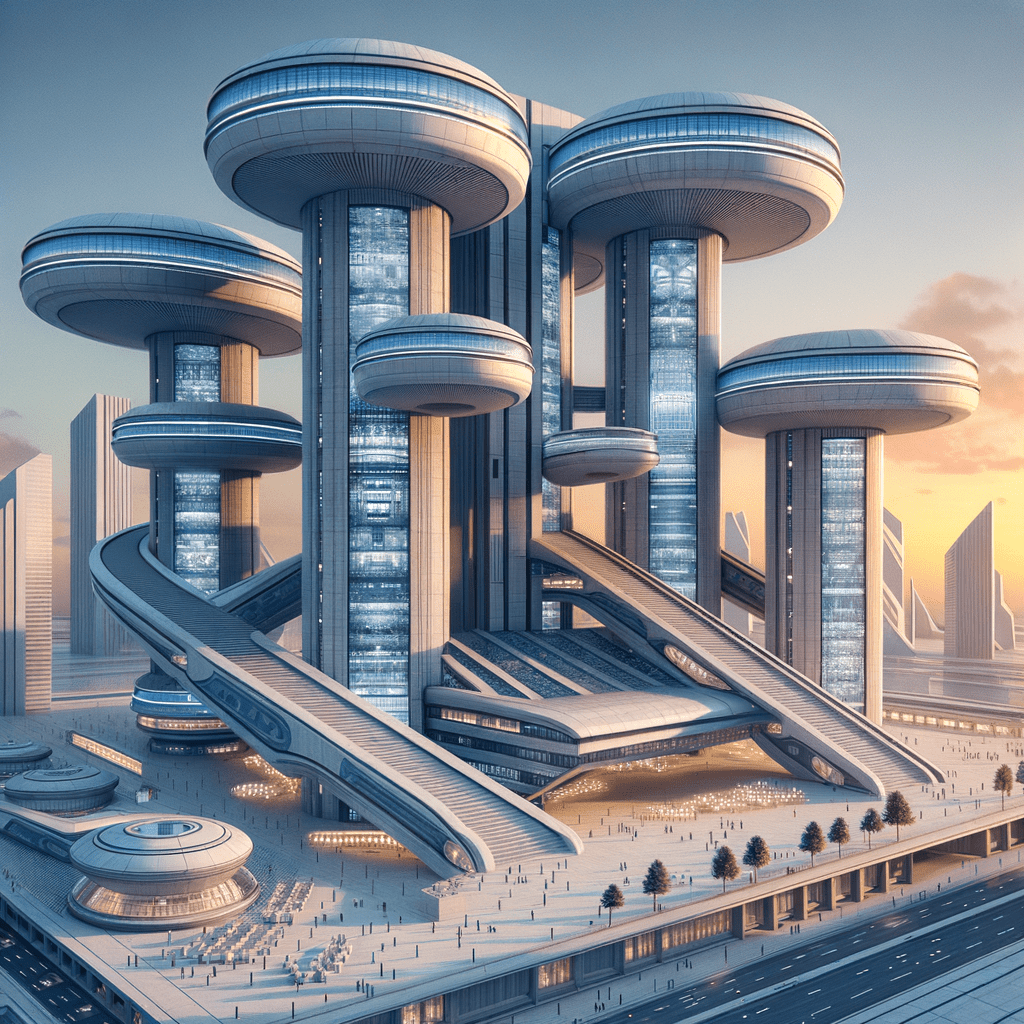Discover buildings that embody the aesthetic and ideological principles of Futurism, demonstrating how the movement’s ideas extend beyond the canvas.
Futurism was an artistic and cultural movement that emerged in Italy at the beginning of the 20th century, characterized by an emphasis on speed, technology, youth, and violence. Founded by Filippo Tommaso Marinetti in 1909, Futurism influenced various fields, including painting, sculpture, literature, and, naturally, architecture.
Futurist architecture stands out for its bold use of modern materials, dynamic shapes, and a sense of movement and progress. This article will explore five buildings that embody these principles, demonstrating how Futurism’s ideas extend beyond the canvas.
1. The Pompidou Center, Paris
The Pompidou Center, designed by Renzo Piano and Richard Rogers, is an iconic example of futuristic architecture. Inaugurated in 1977, this building is known for its exposed exterior structure, showcasing pipes, escalators, and ventilation ducts.
Modern Materials: The use of steel and glass gives the building an industrial and contemporary look.
Innovative Design: The exposed external structure challenges traditional architectural conventions.
Functionality: The interior spaces are highly flexible and can be adapted to various exhibition needs.
The Pompidou Center represents a vision of the future where technology and art merge to create dynamic and interactive public spaces.
2. The Shanghai Tower
The Shanghai Tower, designed by Gensler, is one of the tallest buildings in the world and an extraordinary example of futuristic architecture. Completed in 2015, this 632-meter tower is a symbol of progress and innovation.
Sustainability: The Shanghai Tower is equipped with a rainwater harvesting system and integrated wind turbines.
Aerodynamic Design: The spiral shape reduces wind resistance and enhances energy efficiency.
Advanced Technology: The building is equipped with high-speed elevators and an intelligent management system.
The Shanghai Tower demonstrates how futuristic architecture can combine aesthetics and functionality to create sustainable and cutting-edge buildings.
3. The Guggenheim Museum, Bilbao
The Guggenheim Museum Bilbao, designed by Frank Gehry, is another example of futuristic architecture. Inaugurated in 1997, this museum is renowned for its organic forms and innovative use of titanium.
Innovative Materials: The use of titanium gives the building a futuristic and reflective appearance.
Organic Forms: Fluid curves and undulating surfaces create a sense of movement and dynamism.
Cultural Impact: The museum has transformed Bilbao into a world-renowned cultural destination.
The Guggenheim Museum Bilbao is an example of how futuristic architecture can have a significant impact not only on aesthetics but also on the culture and economy of a city.
4. The Vertical Forest, Milan
Il Bosco Verticale, designed by Stefano Boeri, is an example of futuristic architecture that integrates nature into the urban environment. Completed in 2014, this residential complex consists of two towers covered with trees and plants.
Environmental Sustainability: Plants improve air quality and reduce noise pollution.
Innovative Design: The integration of vegetation creates a unique microclimate and enhances the well-being of residents.
Social Impact: Bosco Verticale promotes a sustainable lifestyle and a greater connection with nature.
The Vertical Forest demonstrates how futuristic architecture can contribute to creating greener and more sustainable cities.
Burj Khalifa, Dubai
The Burj Khalifa, designed by Adrian Smith of Skidmore, Owings & Merrill, is the tallest building in the world and a symbol of progress and innovation. Inaugurated in 2010, this 828-meter skyscraper is an extraordinary example of futuristic architecture.
Advanced Technology: The Burj Khalifa is equipped with high-efficiency cooling systems and high-speed elevators.
Iconic Design: The stepped shape and glass façade give the building a futuristic and distinctive appearance.
Economic Impact: The Burj Khalifa has helped transform Dubai into a global hub for business and tourism.
The Burj Khalifa represents a vision of the future where architecture pushes the boundaries of technology and innovation to create iconic and functional buildings.
Conclusion
In conclusion, these five buildings represent extraordinary examples of how futuristic architecture can embody the aesthetic and ideological principles of Futurism. From the innovative use of materials to environmental sustainability, these buildings demonstrate how the movement’s ideas extend beyond the canvas and influence the real world.
Futurism continues to inspire architects and designers around the world, driving them to create buildings that are not only visually stunning but also enhance the quality of life and promote technological and social progress.
For more information on futuristic architecture, visit the ArchDaily website.




